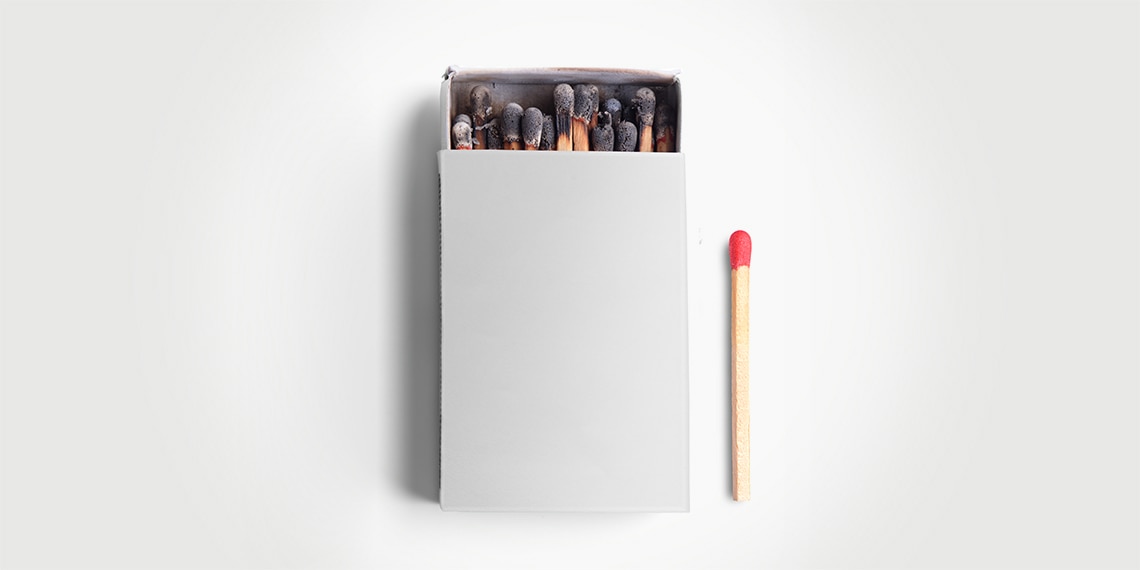
Millennials may stake a claim as the “burnout generation,” but job exhaustion is as old as time. We throw ourselves headlong into our perception of success, only to be overwhelmed by the very thing we thought we wanted. While burnout is nothing new, today there’s more research behind it—and more suggestions for avoiding it.
The work-life balance challenge stems from the millennial work ethic that implies they “should always be working.” That live-to-work credo has become reality for many workers today—including those who are not millennials. But of course, all work and no play makes Jack (and Jill) very burned out.
Why Is Burnout Hitting So Hard?
Fueled by the need to be digitally connected 24/7 and anxiety over record-breaking college debt, burnout is hitting younger workers sooner—and with more impact.
While past generations have felt burned out, recent surveys show that millennials really feel the heat, with 84% experiencing burnout at their current job, compared to 77% of all respondents. And nearly half of millennials say they left a job specifically because they felt burned out, compared to 42% of all respondents.
Not only does burnout impact careers, it scorches health and personal relationships. Among employees who are very often or always burned out, 63% are more likely to take a sick day, and 23% are more likely to visit the emergency room. The psychological and physical problems of burned-out employees cost an estimated $125 billion to $190 billion a year in healthcare spending in the United States. Not surprisingly, employees who are very often or always burned out are also more than twice as likely to strongly agree that the demands of their job interfere with family life.
Can You Burn Bright Without Spontaneously Combusting?
Fortunately, there are proven ways to avoid feeling overwhelmed in your career. Here are six strategies to help extinguish habits that lead to job burnout.
1
Set Better Boundaries
Make down time as much of a priority as your most important meeting. Block out time for lunch and daily breaks on your computer’s calendar to ensure colleagues know you’re not available. When the workday or week is through, leave your work phone and laptop at the office if possible. If you must carry these devices home, turn them off (or mute them) and log out of accounts like email, Skype and Slack to prevent the temptation to continue working. Or download one of the many apps that let you block phone use for specific periods of time.
2
Allow for Focus on the Job
How many devices do you have running at once? Limiting the number of devices, apps or media streams you’re engaging with can decrease tech overload. Likewise, focusing on one task is a balm for burnout. Set aside blocks of time do work without distraction. For those accustomed to habitually multitasking by checking email or social media, focusing may initially feel awkward. But with practice, you may discover a renewed sense of accomplishment and satisfaction by tackling one thing at a time.
3
Work Smart
Digital technology can be a workaholic’s enabler—or the best defense against burnout. Business owners who provide a tech-enhanced smart office may also experience less job turnover. A survey of 7,000 employees across 15 countries showed that those who work in fully enabled digital workplaces are 51% more likely to have strong job satisfaction and 43% more likely to feel positive about their work-life balance than those who have less access to workplace tech. These employees are also 60% more likely to say they’re motivated at work and 91% more likely to praise their company’s vision.
4
Try Flex Time
Although working from home is not an option (or a preference) for everyone, it makes sense that flexible work hours and conditions curtail burnout. (Consider how much calmer you’d be if you didn’t have to fight traffic during your commute!) Working remotely or having flexibility in your work hours relieves the workaday monotony and gives you some control of your work environment. In fact, you’re 43% less likely to experience high levels of burnout when you have a choice in deciding what tasks to do, when to do them and how much time to spend on them.
5
Mind Your Mind
Burnout isn’t all in your mind. But the way you think about yourself and your work may be contributing to feelings of anxiety about your career. Mindfulness practices can help. These tactics help mitigate fear and sooth burnout mentality: observing your thoughts, not reacting to perceived conflict, remaining present in the moment, allowing situations to unfold rather than forcing solutions and being open and honest about your strengths and weaknesses. Need a personal guru to get you on track? Try downloading one of the many mindfulness apps.
6
Vacate
Remember those days you’re given each year when you get paid not to work? Use them! Fifty-two percent of employees didn’t take all the vacation days provided them in 2017. Why? Many feared falling behind on their work and/or being left out of the loop. Past generations took full advantage of their paid time off, but since 2000, the average number of used vacation days has dropped from 20 (in 2000) to 16 (in 2015). Could there be a burnout correlation? Yes. Take those vacation days—and don’t forget to turn on your “out of office” message and unplug.
If you’re feeling burned out, you may also want to look at your job—and your career—from 10,000 feet up. Is your current path satisfying you, or is it causing you to overwork yourself? Even if you’re mid-career, there’s still time to follow your dreams—as long as you’re financially prepared.
Brigid Galloway is a freelance journalist whose writes about personal finance and healthcare for media outlets, including Marketplace and NPR.
Ready to get away? Read about these 7 amazing experiences meant for a splurge.

